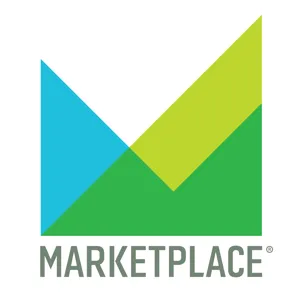Podcast Summary
Consumer spending resilience: Consumers spent 0.8% more in June than May when adjusting for external factors, indicating selective spending despite price sensitivity, potentially influencing Fed's interest rate policy
The American consumer continues to show remarkable resilience despite increasing price sensitivity. While retail sales were flat overall in June, a closer look at the data reveals that consumers actually spent 0.8% more than in May when adjusting for factors like car sales and gas prices. This trend is significant as it indicates that consumers are still spending, albeit more selectively. Economists suggest that the relatively healthy labor market and household balance sheets are contributing factors. These findings could influence the Federal Reserve's decision on interest rate policy, as recent signs of cooling inflation and the job market strengthen the case for a rate cut.
Economic Indicators: The economy shows conflicting signals, with some positive indicators and others pointing to potential challenges. The Fed is closely monitoring consumer spending, particularly among lower-income individuals, to gauge the overall health of the economy and may consider cutting interest rates based on upcoming data.
The economy is experiencing conflicting signals, with some positive indicators like retail sales and others pointing to potential challenges, such as rising credit card delinquencies and unemployment. This mixed picture suggests that the economy is at a turning point, and the Federal Reserve is closely watching consumer spending, particularly among lower-income individuals, to gauge the overall health of the economy. The Fed is still considering the possibility of cutting interest rates, but the final decision will depend on the data in the coming months. The development of emotionally intelligent AI, like Hume AI's Evie, could potentially help improve our understanding of complex situations like the current economic climate by detecting emotions and nuances in human speech.
Emotional AI: Emotional AI like Hume, which uses voice and facial recognition to understand and respond to human emotions, is being adopted by companies for improved customer service and chatbot interactions, but ethical concerns about manipulation and desensitization persist, and the reliability of emotion recognition technology is still debated.
Hume AI, an empathic AI developed by the company of the same name, is designed to understand and respond to human emotions, using a combination of voice and facial recognition technology. The AI is trained on a wide range of emotional expressions, beyond what traditional emotion science has historically studied, and is being used by companies to improve customer service and chatbot interactions. However, ethical concerns have been raised about the potential for these technologies to manipulate or desensitize users, and the reliability of emotion recognition technology is still a matter of debate. Hume AI's CEO, Alan Cowan, has aspirations for more personalized AI assistance that can optimize for individual well-being. The technology has already been adopted by companies like Lawyer.com and big tech firms, with prices varying per client. Despite the potential benefits, concerns about bias and the subjective nature of emotions persist.
Housing market lull: Builders shift focus to remodeling due to mortgage rates, NAHB anticipates potential interest rate cuts to boost industry, logistics sector thrives due to online shopping demand
The housing market is experiencing a lull due to elevated mortgage rates, causing both builders and homeowners to hesitate. Builders like George Arroyo are focusing on remodeling projects instead of new constructions, while the National Association of Home Builders anticipates potential interest rate cuts later this year to boost the industry. Meanwhile, the logistics sector is thriving as online shopping continues to drive the need for faster delivery methods, with companies like UPS relying on their own airport operations and aircraft fleets to meet consumer demands.
UPS efficiency in Louisville: UPS's Louisville facility maximizes cargo space with container system, uses efficient conveyor belts and caster debt system to move cargo, and employs thousands to ensure quick shipping, with 155 miles of conveyor belts.
UPS's Worldport in Louisville, Kentucky, is a massive operation where efficiency and speed are key. The facility uses a system of containers that fit perfectly inside the cargo planes, maximizing every inch of space to minimize air freight costs. Containers are moved around using wheels and a caster debt system, and once unloaded, cargo is sorted and sent out using a conveyor belt system. UPS chose Louisville due to its central location and mild weather, and during peak hours, a plane takes off every minute. The facility employs thousands of workers and has 155 miles of conveyor belts to ensure packages are shipped out quickly. Recently, 14 state attorneys general asked FEMA to update its rules to make extreme heat and wildfire smoke events eligible for major disaster declarations, citing last year's record number of heat-related deaths in the US.
